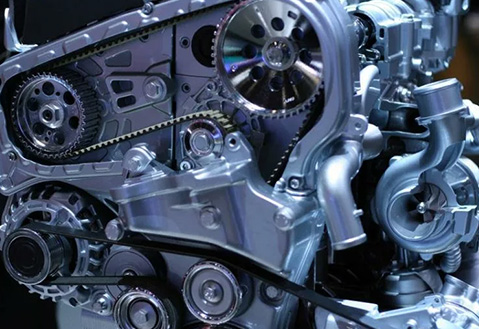- Arabic
- French
- Russian
- Spanish
- Portuguese
- Turkish
- Armenian
- English
- Albanian
- Amharic
- Azerbaijani
- Basque
- Belarusian
- Bengali
- Bosnian
- Bulgarian
- Catalan
- Cebuano
- Corsican
- Croatian
- Czech
- Danish
- Dutch
- Afrikaans
- Esperanto
- Estonian
- Finnish
- Frisian
- Galician
- Georgian
- German
- Greek
- Gujarati
- Haitian Creole
- hausa
- hawaiian
- Hebrew
- Hindi
- Miao
- Hungarian
- Icelandic
- igbo
- Indonesian
- irish
- Italian
- Japanese
- Javanese
- Kannada
- kazakh
- Khmer
- Rwandese
- Korean
- Kurdish
- Kyrgyz
- Lao
- Latin
- Latvian
- Lithuanian
- Luxembourgish
- Macedonian
- Malgashi
- Malay
- Malayalam
- Maltese
- Maori
- Marathi
- Mongolian
- Myanmar
- Nepali
- Norwegian
- Norwegian
- Occitan
- Pashto
- Persian
- Polish
- Punjabi
- Romanian
- Samoan
- Scottish Gaelic
- Serbian
- Sesotho
- Shona
- Sindhi
- Sinhala
- Slovak
- Slovenian
- Somali
- Sundanese
- Swahili
- Swedish
- Tagalog
- Tajik
- Tamil
- Tatar
- Telugu
- Thai
- Turkmen
- Ukrainian
- Urdu
- Uighur
- Uzbek
- Vietnamese
- Welsh
- Bantu
- Yiddish
- Yoruba
- Zulu
ਸਤੰ. . 07, 2024 18:06 Back to list
Engine Accessory Drive Belt - Essential Guide and Solutions
Understanding the Engine Accessory Drive Belt
The engine accessory drive belt, often referred to as the serpentine belt, is a vital component of a vehicle's engine system. This belt is responsible for powering various engine accessories, including the alternator, power steering pump, water pump, and air conditioning compressor. Understanding its function, maintenance, and potential issues is essential for any vehicle owner.
Function of the Accessory Drive Belt
The primary purpose of the engine accessory drive belt is to transfer power generated by the engine’s crankshaft to various accessories. This is accomplished through a series of pulleys. The belt wraps around these pulleys, and as the crankshaft rotates, it drives the belt and, consequently, the connected accessories. This synchronization ensures that vital vehicle systems such as electrical generation (via the alternator) and cooling (via the water pump) function efficiently.
Types of Engine Accessory Drive Belts
While the term serpentine belt is commonly used, there are different types of accessory drive belts. The serpentine belt is a single, continuous belt that winds around multiple pulleys. Its design allows for greater efficiency and reduces the space needed in the engine bay.
In contrast, some older vehicle models may still utilize multiple V-belts, where each belt drives a specific accessory. Although V-belts may be easier to replace individually, they typically require more space and can result in a more complex maintenance regimen.
Maintenance and Inspection
engine accessory drive belt

Routine inspection of the accessory drive belt is crucial. Over time, belts can become worn and develop cracks, fraying, or glazing, which can lead to belt failure. A failing belt can cause a loss of power to essential components, leading to engine overheating or electrical failure. Vehicle owners should regularly check the belt for signs of wear and replace it according to the manufacturer’s recommended maintenance schedule—usually every 60,000 to 100,000 miles.
During routine maintenance, mechanics often check the belt tension. A loose belt can slip off the pulleys or produce a squealing noise, while a belt that is too tight can cause excessive wear on both the belt and the pulleys. Most modern vehicles use an automatic tensioner to maintain the correct tension, but it’s still important to ensure the system is functioning effectively.
Signs of Problems
Drivers should be alert to specific warning signs that may indicate issues with the accessory drive belt. These can include squealing or squeaking noises from the engine compartment, visible wear on the belt, or a warning light on the dashboard signifying a problem with the charging system or engine temperature.
If a belt does break, it can lead to immediate loss of control over the affected accessories, and in some cases, may even result in significant engine damage. Therefore, timely intervention is essential.
Conclusion
The engine accessory drive belt is a small but crucial component of a vehicle’s engine system. Regular inspections and timely replacement can ensure optimal performance and extend the lifespan of both the belt and the engine accessories it powers. As a vehicle owner, being proactive about maintenance can save time and money, ultimately ensuring a smoother and safer driving experience.
-
Korean Auto Parts Timing Belt 24312-37500 For Hyundai/Kia
NewsMar.07,2025
-
7PK2300 90916-T2024 RIBBED BELT POLY V BELT PK BELT
NewsMar.07,2025
-
Chinese Auto Belt Factory 310-2M-22 For BMW/Mercedes-Benz
NewsMar.07,2025
-
Chinese Auto Belt Factory 310-2M-22 For BMW/Mercedes-Benz
NewsMar.07,2025
-
90916-02660 PK Belt 6PK1680 For Toyota
NewsMar.07,2025
-
drive belt serpentine belt
NewsMar.07,2025

